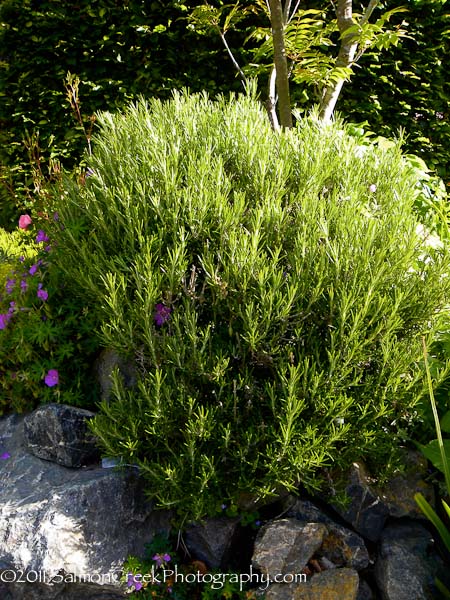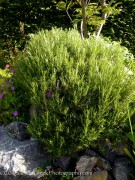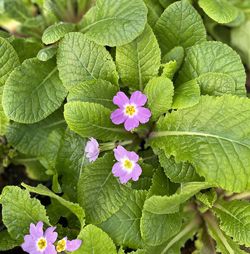
Rosmarinus
Rosemary
Studious Greeks twined Rosemary in their hair “for remembrance” before exams; the French burned it as an incense substitute in cathedrals. And of course, there’s the taste—pungent and aromatic, a pinch delivers a punch of flavor. The rugged evergreens of this genus afford short needle-like foliage studded with tiny, orchid-shaped mostly blue blooms. Rosemary obliges heat and poor soil, triumphs over deer and diseases, only improves with age and doesn’t demand much, except for sharp draining soil.
Rosmarinus officinalis ‘Irene’ (S-0438)
Each 12.00

Discovered as a volunteer seedling in northern California, ‘Irene’s low mounding habit is much improved over older prostrate Rosemarys. Dense, gray-green, narrow leaves make a vigorous show on long, pendant branches, and the richly colored blue-violet flowers are larger and more profuse than those displayed by other trailing cultivars. Let it cascade down a wall or over the lip of an easily viewed terracotta vessel. Rosemary Irene (PP#9124)
Blooms January–April
Size: 12" – 2' 0" high x 4' 0" wide.
Hardy to zone 8.
Please fill out our Registration Form to receive news of updates to the web site, availability of new plants, give us your feedback, and to be on the mailing list to receive future printed catalogs.
Other selections in this genus:
- Rosmarinus officinalis ‘Arp’
- Rosmarinus officinalis ‘Blue Spires’
- Rosmarinus officinalis ‘Herb Cottage’
- Rosmarinus officinalis ‘Lady In White’
- Rosmarinus officinalis ‘Madeline Hill’
- Rosmarinus officinalis ‘Majorca Pink’
- Rosmarinus officinalis ‘Maltese White’
- Rosmarinus officinalis ‘Santa Barbara Blue’
- Rosmarinus officinalis ‘Sawyer’s Blue’
- Rosmarinus officinalis ‘Taylor’s Blue’










